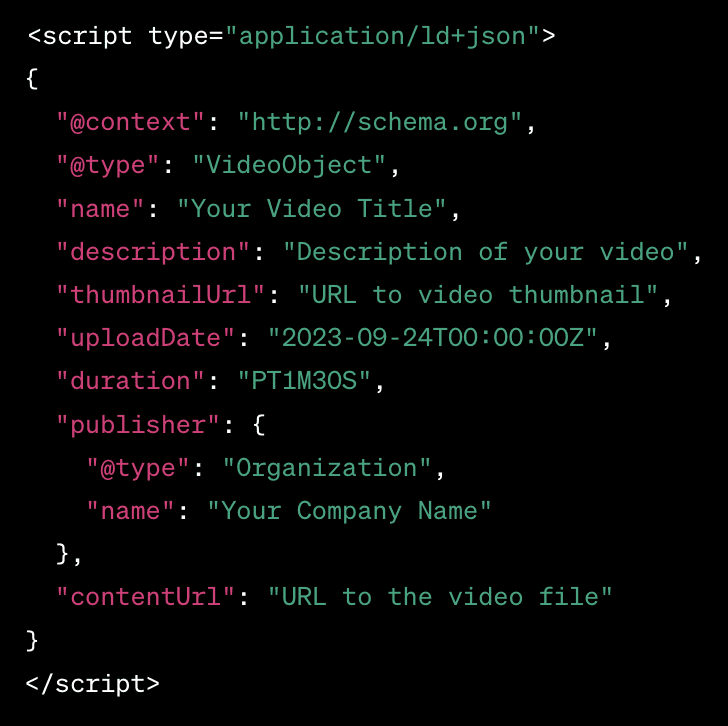Video content is becoming increasingly important. With social media platforms such as Instagram and TikTok dominating, people are used to scrolling through reels and short-form videos to get the information they need.
To stay up to date in this digital landscape, creating regular video content can be a great way to boost brand awareness and improve your organic site traffic. We’ve outlined our 5 top tricks to optimise your video content for SEO.
1. Do your keyword research
As with any piece of content, if you want it to rank in SERPs then you need to ensure you’re focusing on topics that people are actually searching for. Make use of your keyword research tool and figure out if your chosen subject has good search volume.
You also want to check that the search intent is relevant – for example, if you are planning a ‘how to’ video for a commercial keyword then it isn’t likely you’ll be getting the engagement you’re hoping for. In fact, you may suffer from negative SEO metrics such as increased bounce rate due to search intent mismatch.
Finally, you want to ensure that searchers are looking for video content – or at least feel confident that people will benefit from this medium for their query. If people are largely clicking onto text-focused results for a keyword, then it isn’t guaranteed that they will convert to video content.
When you create your video, ensure you are discussing the keywords relating to the topic in a natural way. Don’t write a script and force the keywords in so that you can tick a box by saying them a certain number of times. Instead, remember that your video and the corresponding transcript will rank as long as you are producing high quality content with enough semantic keyword matches.
2. Include a video transcript
Generating a transcript is a great way to ensure your video reaches a larger audience. By posting the text version of your content on the page, you will be improving your chances of ranking for both video and text search results. Having the text available also makes the page easier for crawlers to investigate and index.
There is no need to sit manually making notes on what was said during your video. This can be a laborious task, especially if you created an interview-based podcast that involves lengthy discussions. There are AI tools out there which can convert the audio to text, and all you have to do is edit it for any mistakes it may have made.
You may also find it beneficial to split your transcript into sections. For example, if you move from Topic A to Topic B, make this switch clear by inserting subheadings with H2s or H3s and include high-volume keywords. Don’t forget to include timestamps so that people can jump to their preferred section easily.
3. Implement schema markup
Marking up your video is the best way to ensure that search engines understand the properties of your content. For video content you will want to use the VideoObject schema type, which provides information such as the video title, description, duration and thumbnail.
JSON-LD script can be added to the HTML head of the page which contains the video; for example:

Another way is to use HTML microdata within the webpage markup to specify video details.
The required properties for the VideoObject schema type are the name, description, thumbnailURL and contentURL, but there are other recommended properties such as the duration and upload date – both in ISO 8601 date format – which will provide further context to search engines.
Don’t forget to test your schema markup using Google’s Structured Data Testing Tools, which will validate the schema markup and reveal any errors or warnings before you roll it out.
4. Focus on the user
Think about the user’s experience from the moment they browse through video results for their query. They will be more likely to pick a video with an engaging thumbnail, title and description, so ensure you have put time into making these high-quality. If the thumbnail is simply a screenshot of someone’s face then it may not be exciting enough to persuade a user to click, so consider getting a designer to help you out.
The metadata is just as important for videos as it is for text-based SERPs. You want to ensure a good clickthrough rate once you are visible in results, so while picking the right keywords is key, you will need to balance this consideration with upselling the video to the user. Why should they pick your video and what benefit will they gain from watching it?
Make sure your video has been professionally produced, with good audio, visuals and lighting. Users will be less likely to engage – and more likely to click away – if they feel the video is amateur or won’t be interesting to watch. Closed captions are also a good way to engage the user, as they can follow along if the video is muted, they are hard of hearing or they take in information better with this overlay.
Most importantly, ensure the video content itself is high quality. Think about the video length – if it is too long then viewers will get bored, and if it is too short then it may not cover the topic in enough detail. Just as with text-based content, the video should provide original information that genuinely benefits the viewer. Take a look at our EEAT guidelines to find out more.
5. Focus on your video placement
If you are using video content to improve your organic site traffic, it’s vital to ensure that the webpage your video is placed on has been optimised. Otherwise, it’s less likely that your page will be crawled and indexed – so you will have effectively wasted your time in creating the video.
Ideally, the video should be the main focus of the page. That means you can optimise the on-page SEO for the keywords you have optimised in your video. This will send positive relevancy signals to search engines.
Furthermore, ensure that you only have one video on the page if possible. Google will typically only index one video per page – so if you have to have multiple videos, ensure the one you want to be indexed comes first. Making sure that the video appears above the fold increases your chances of having crawlers index it.
Need help with your video SEO?
Whether you need help with technical optimisation or content strategy for your videos, we’re here to help. Book a Free Acquisitions Workshops, where you can discuss your concerns with experts, receive actionable resources, and a tailored action plan specific to your concerns.












